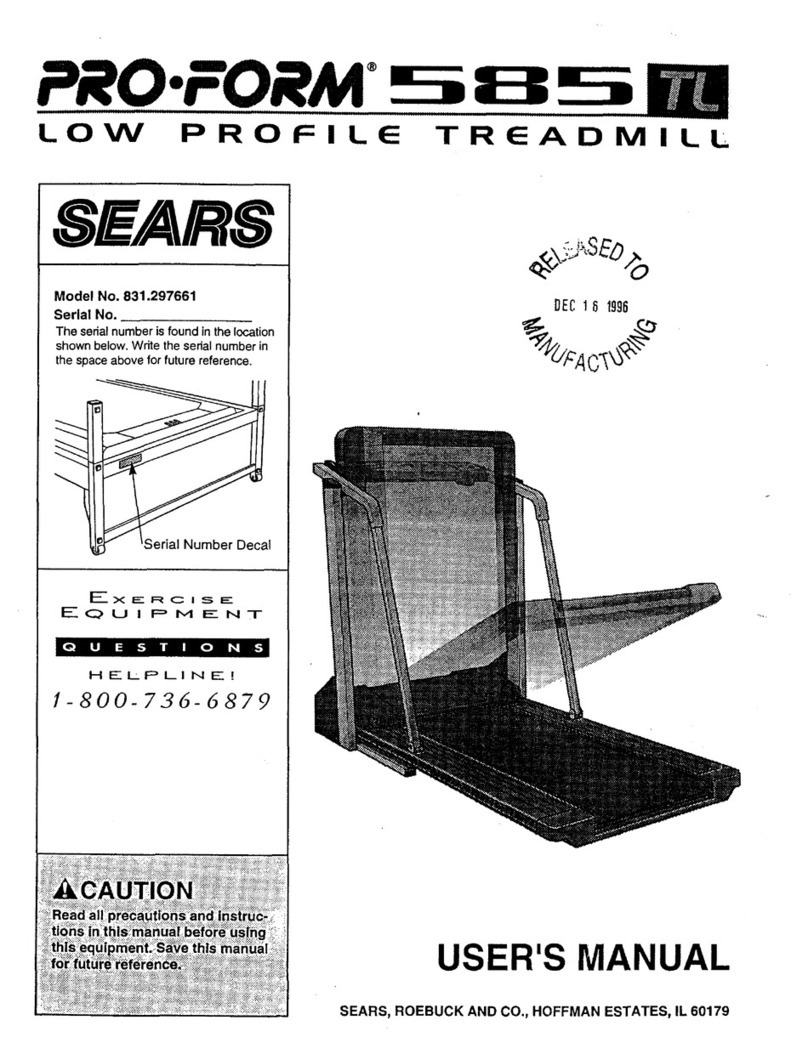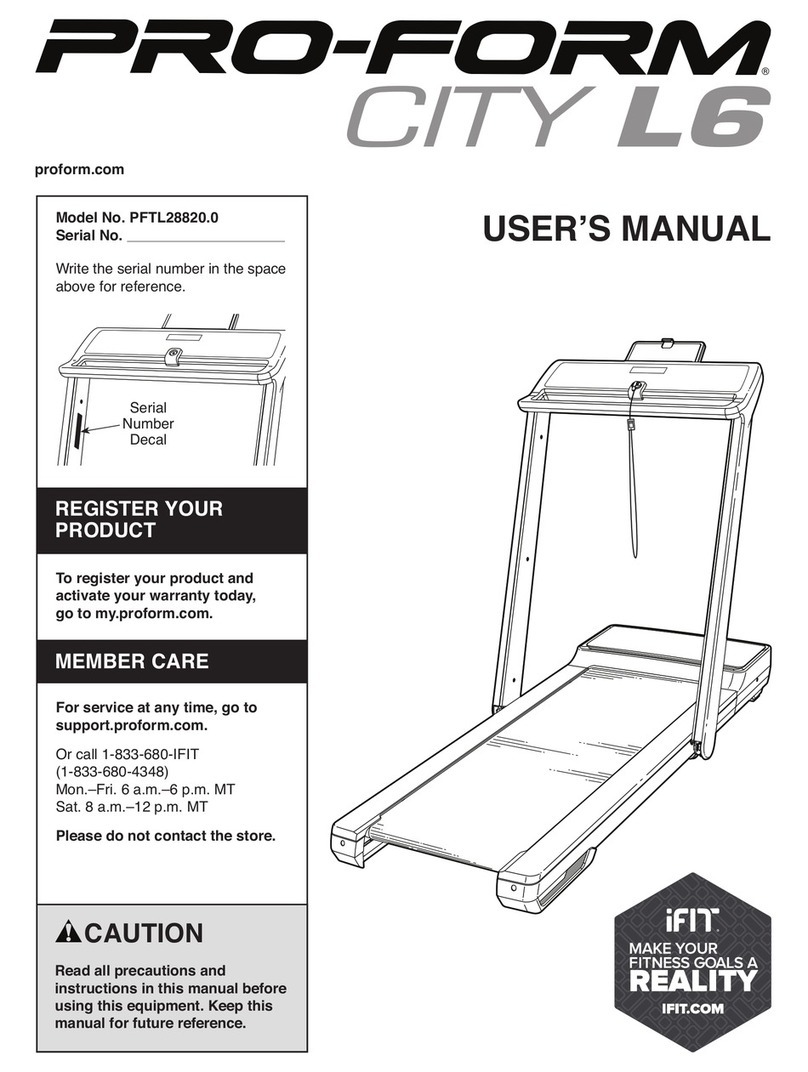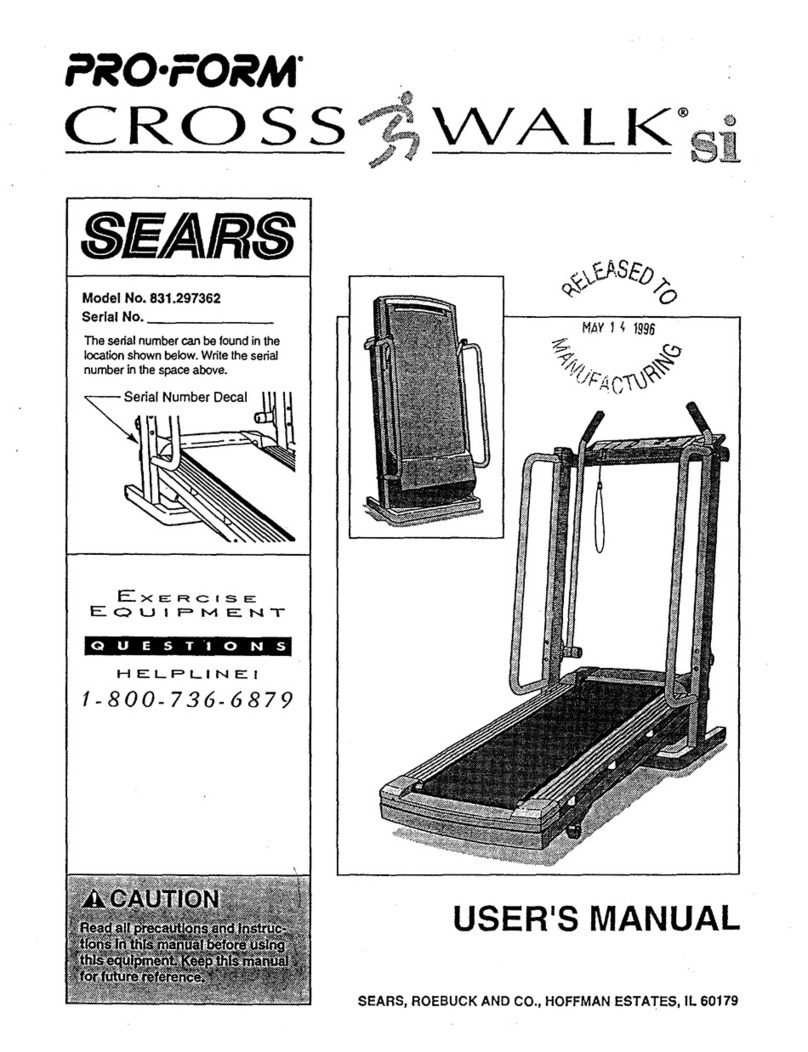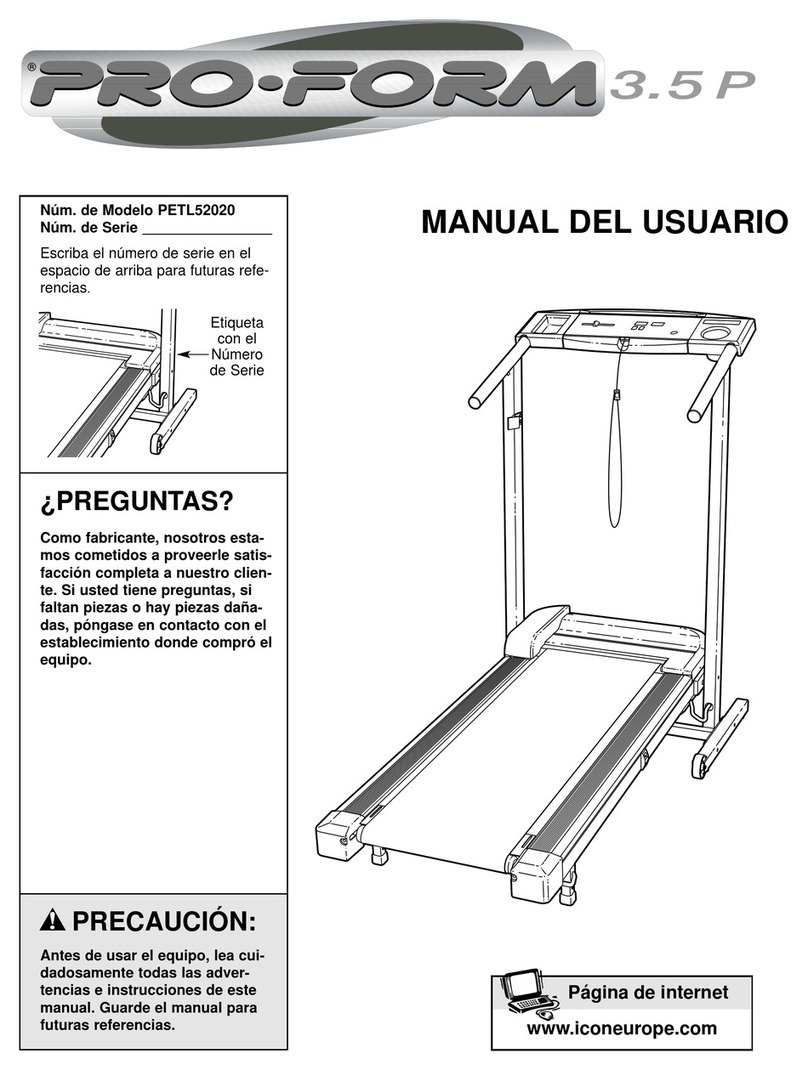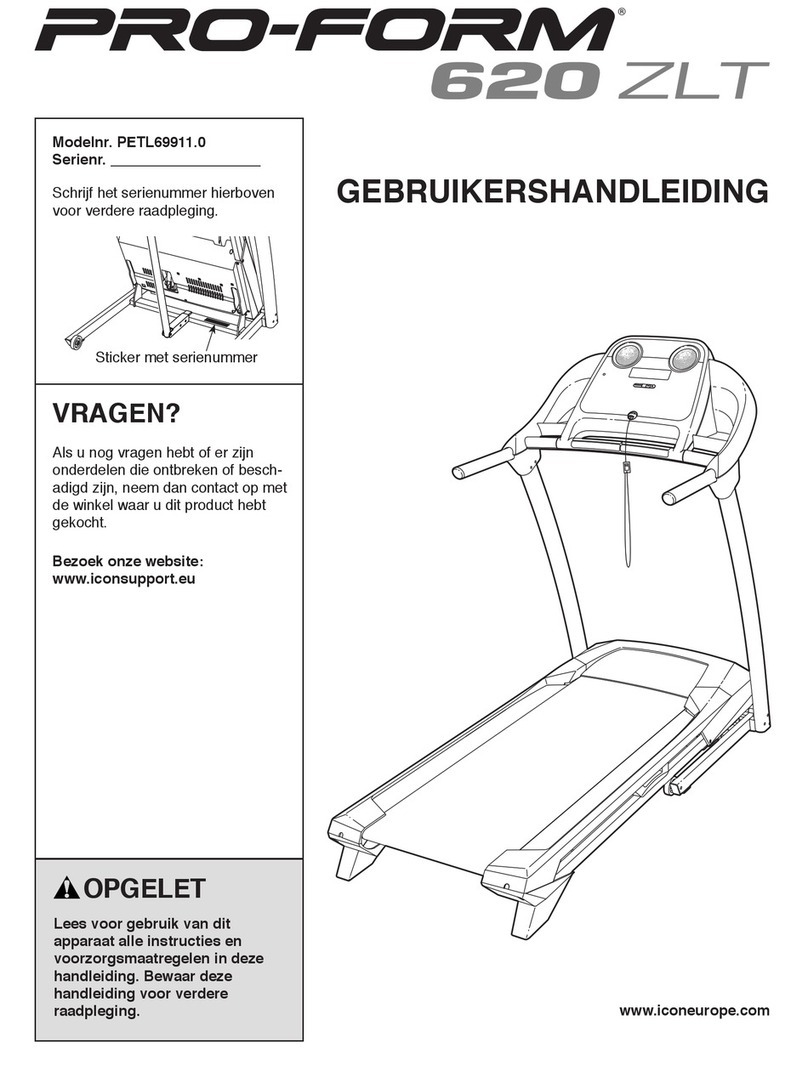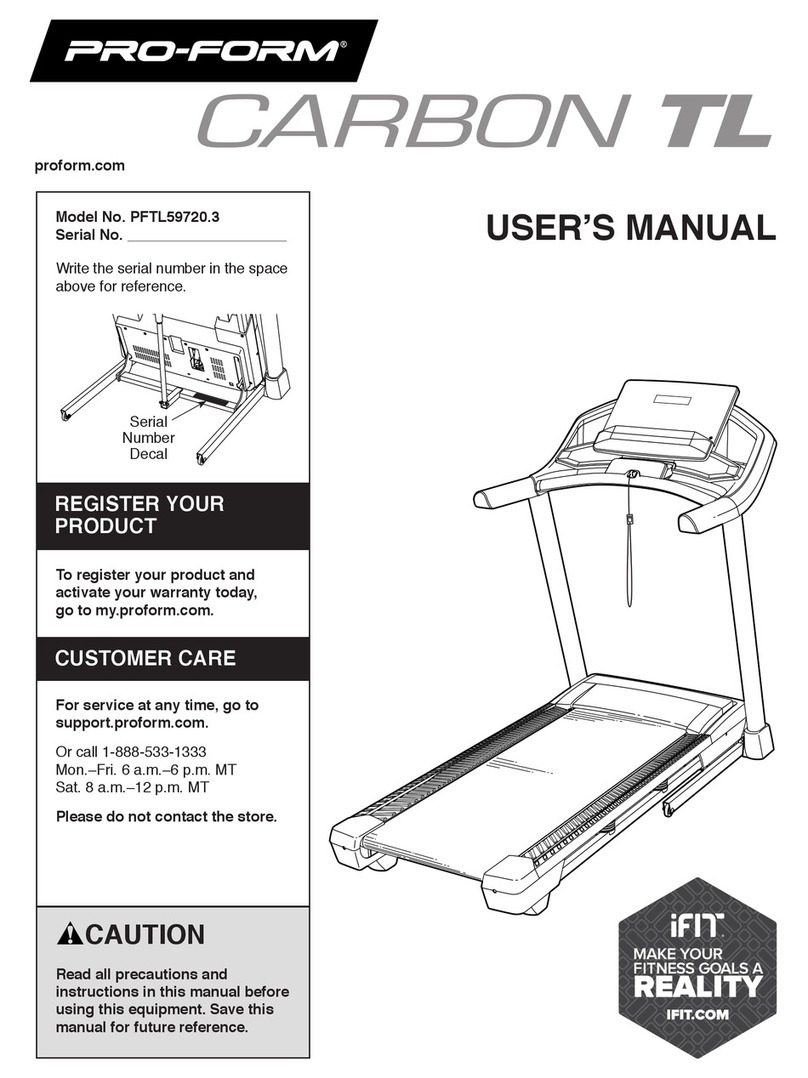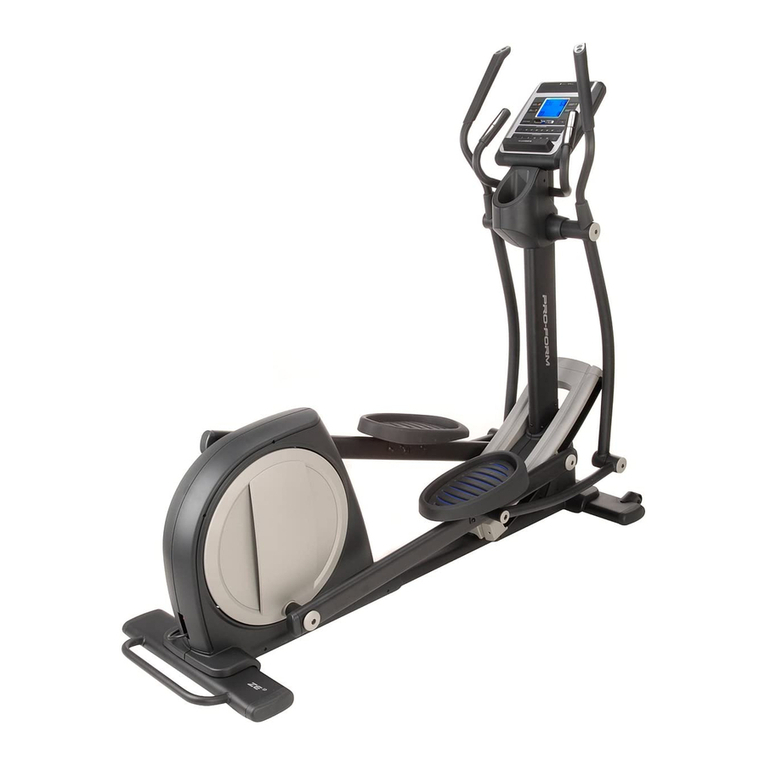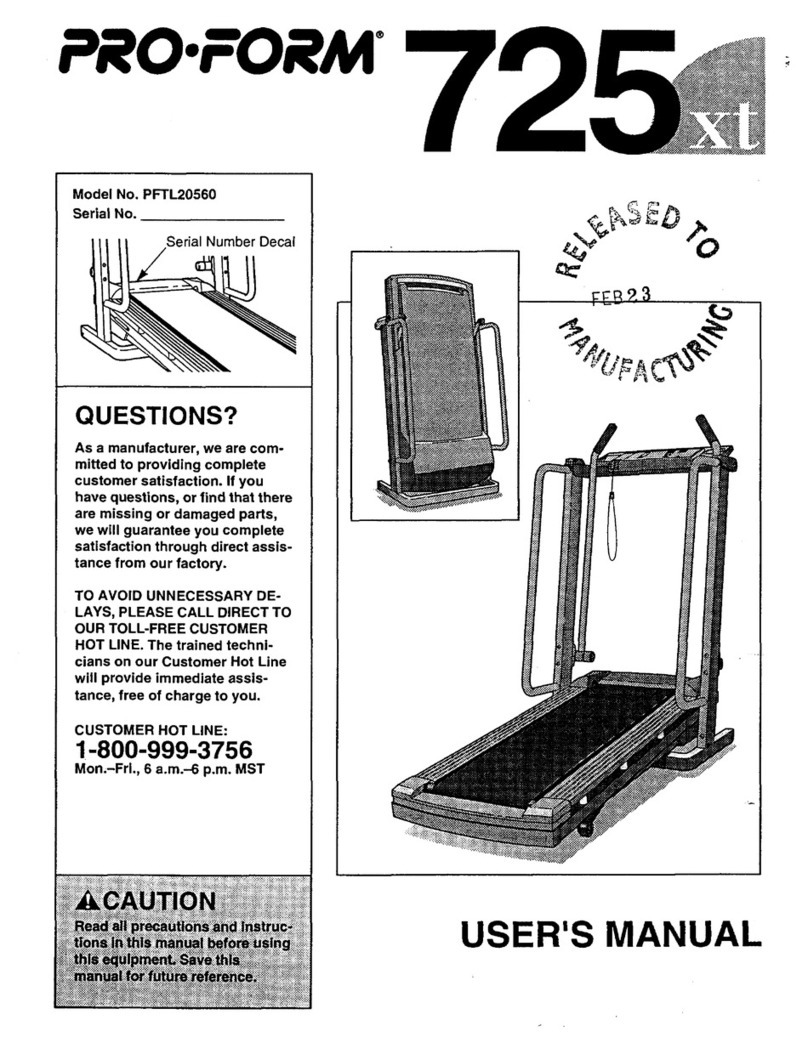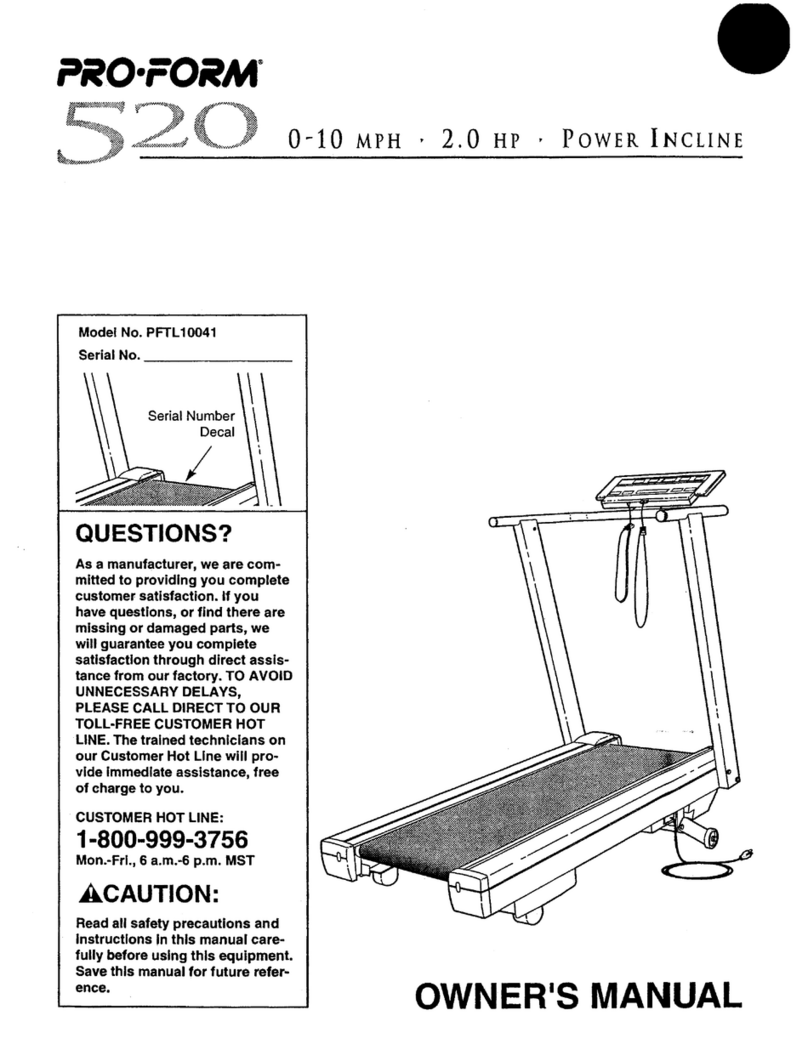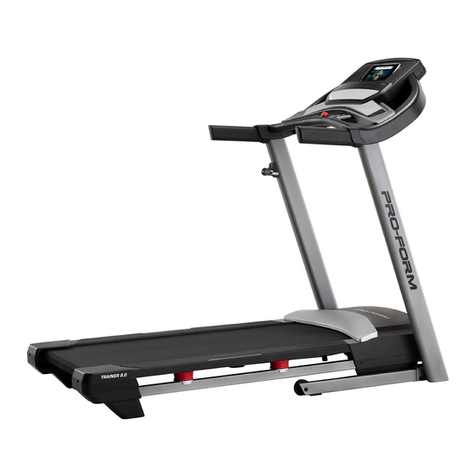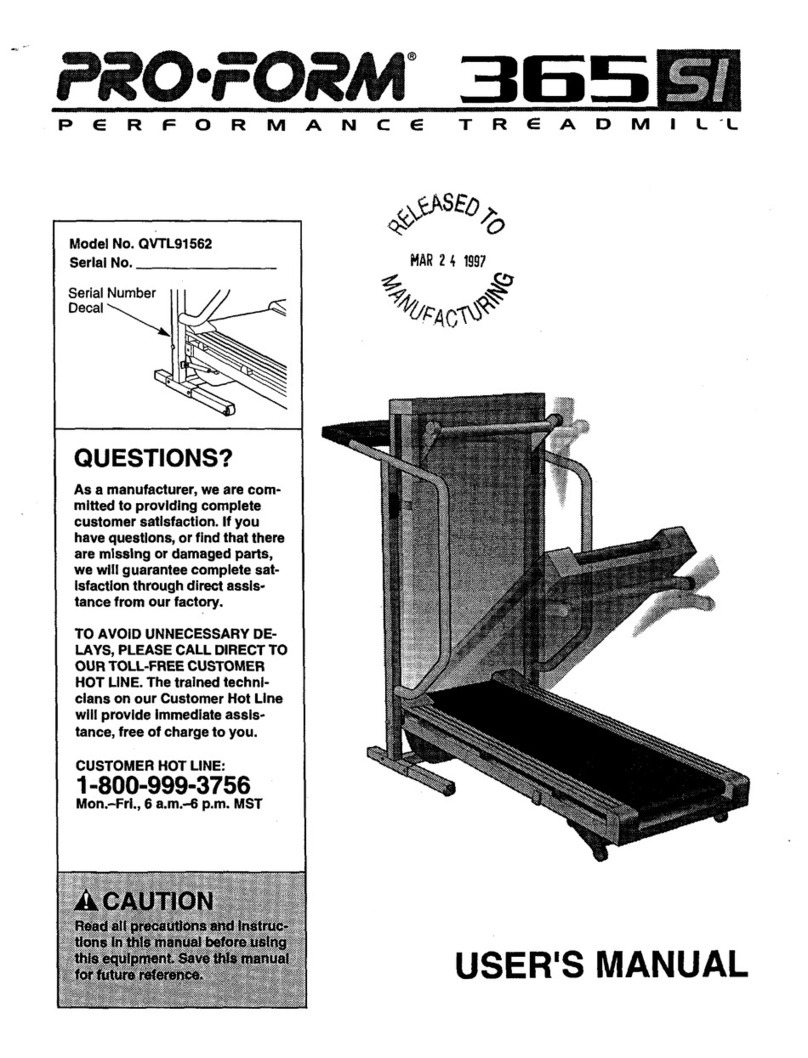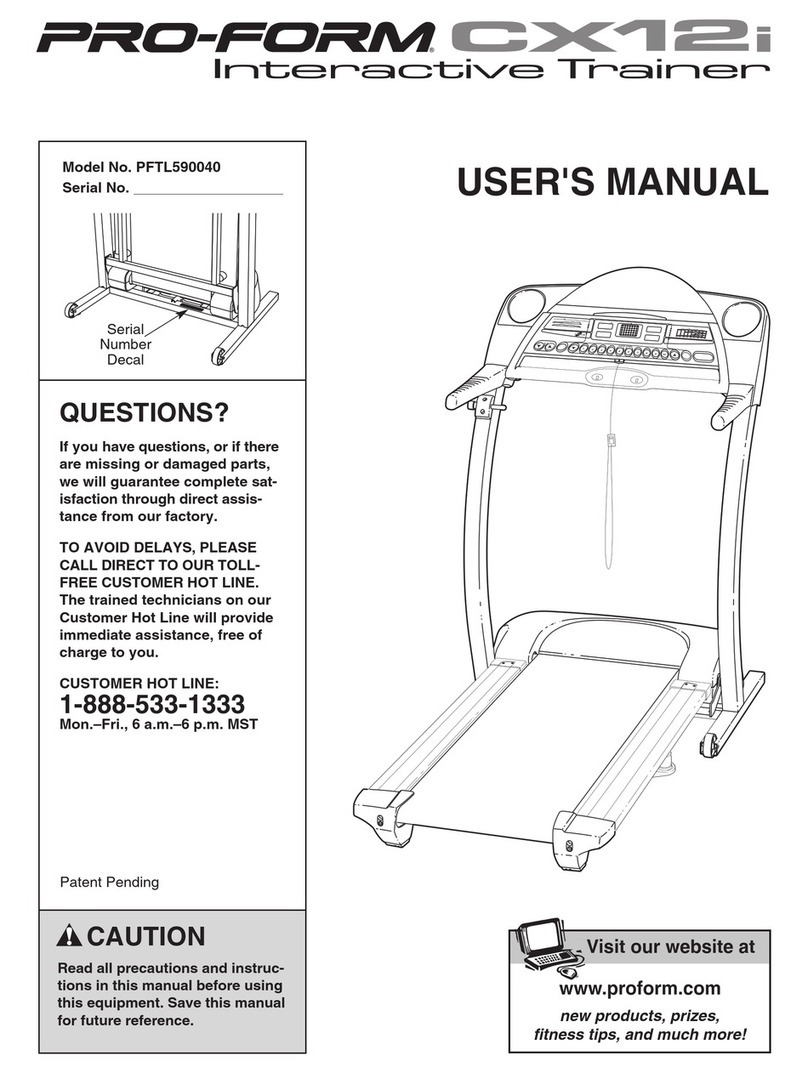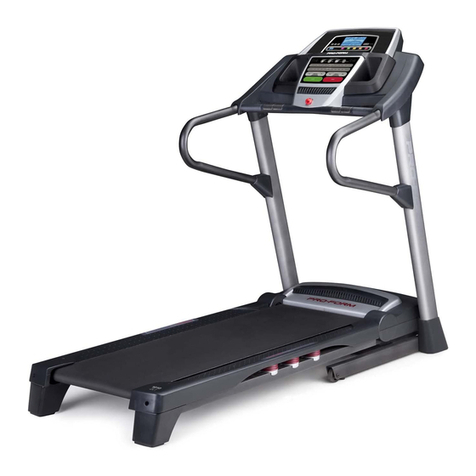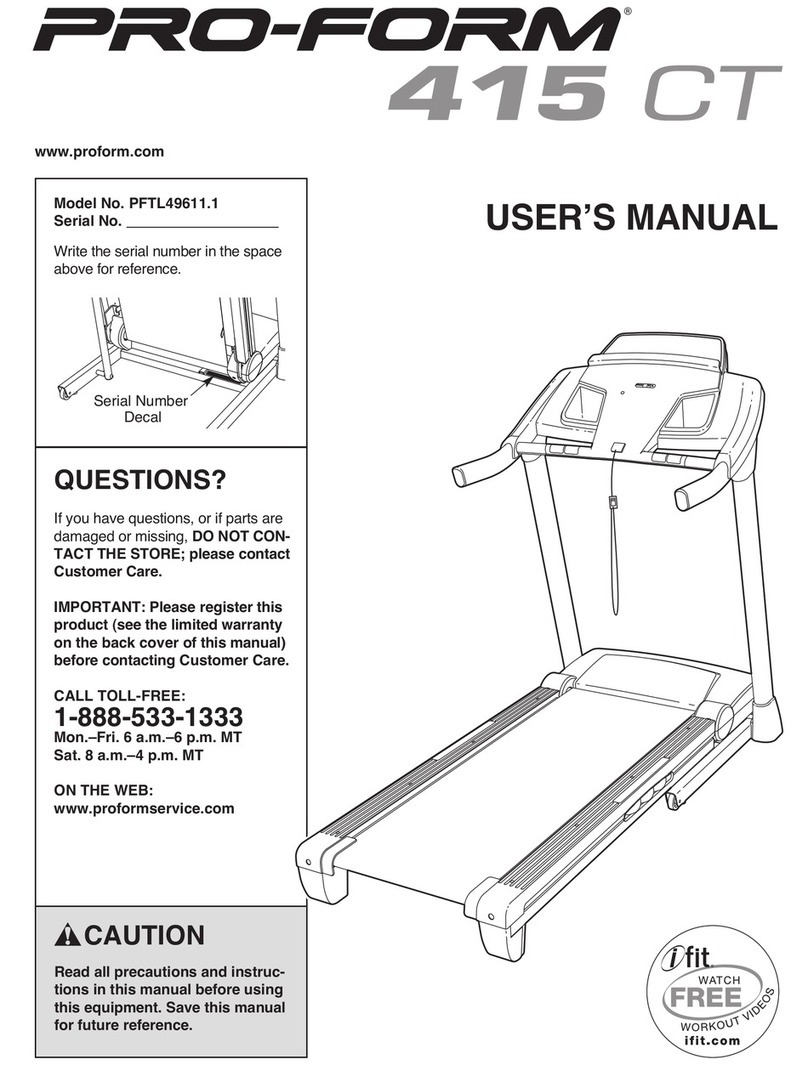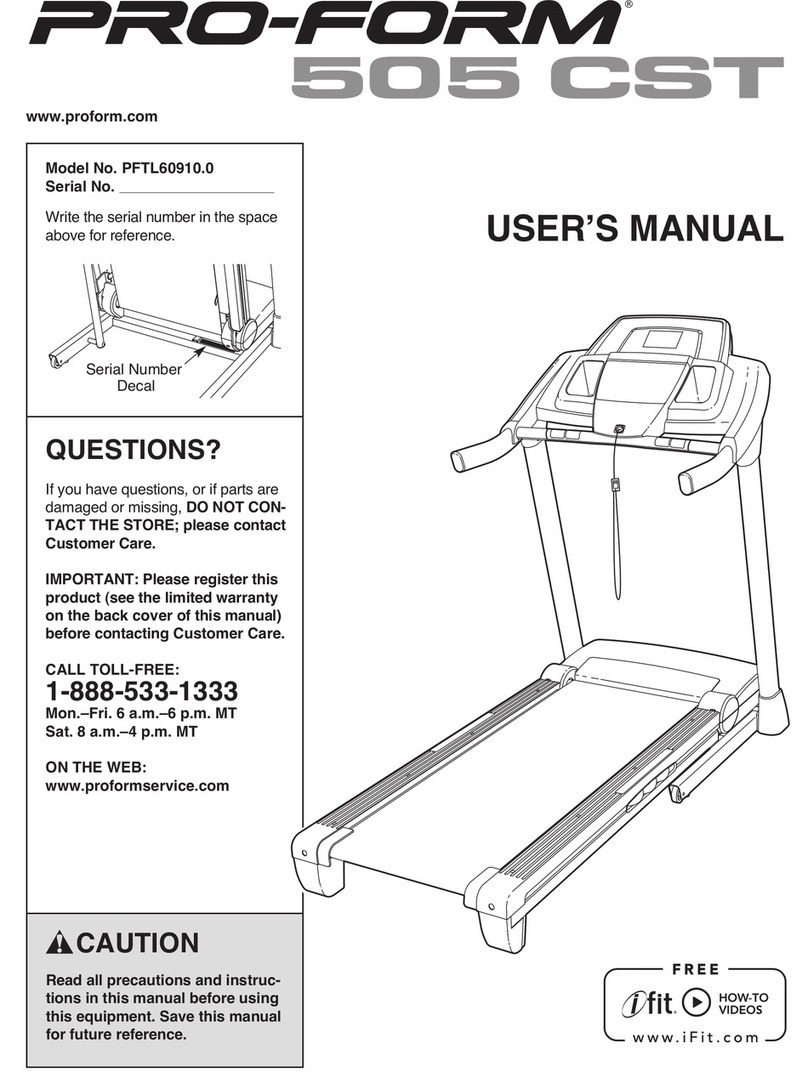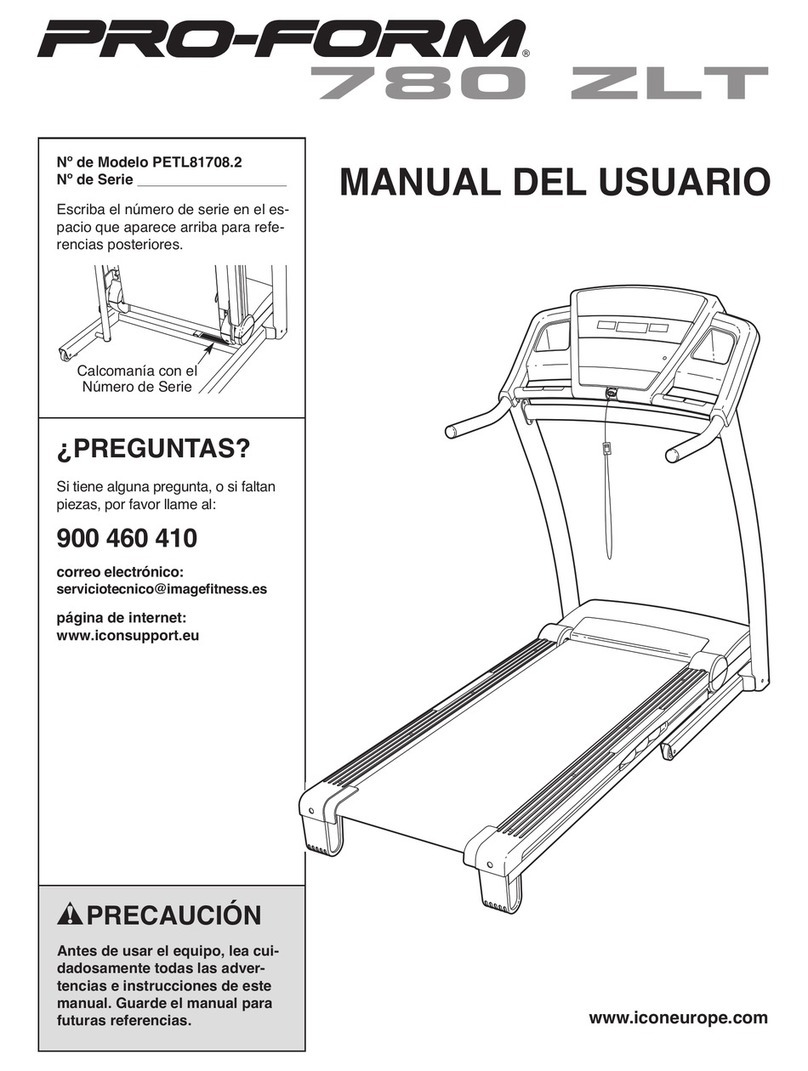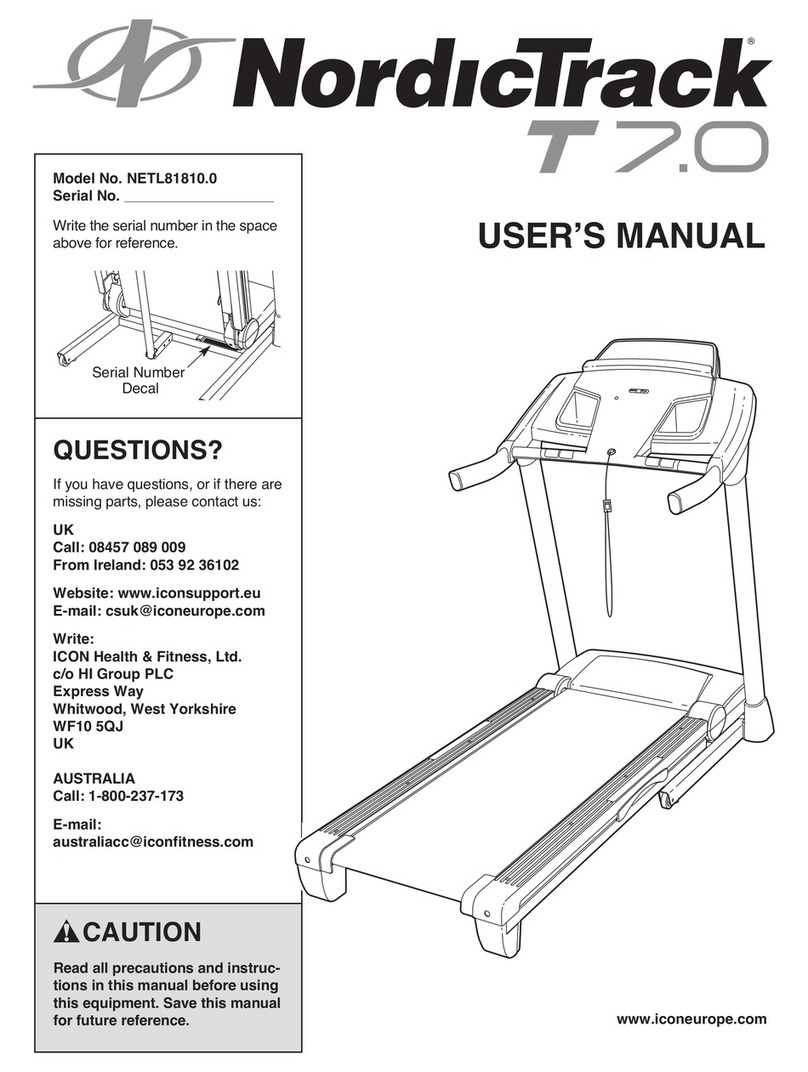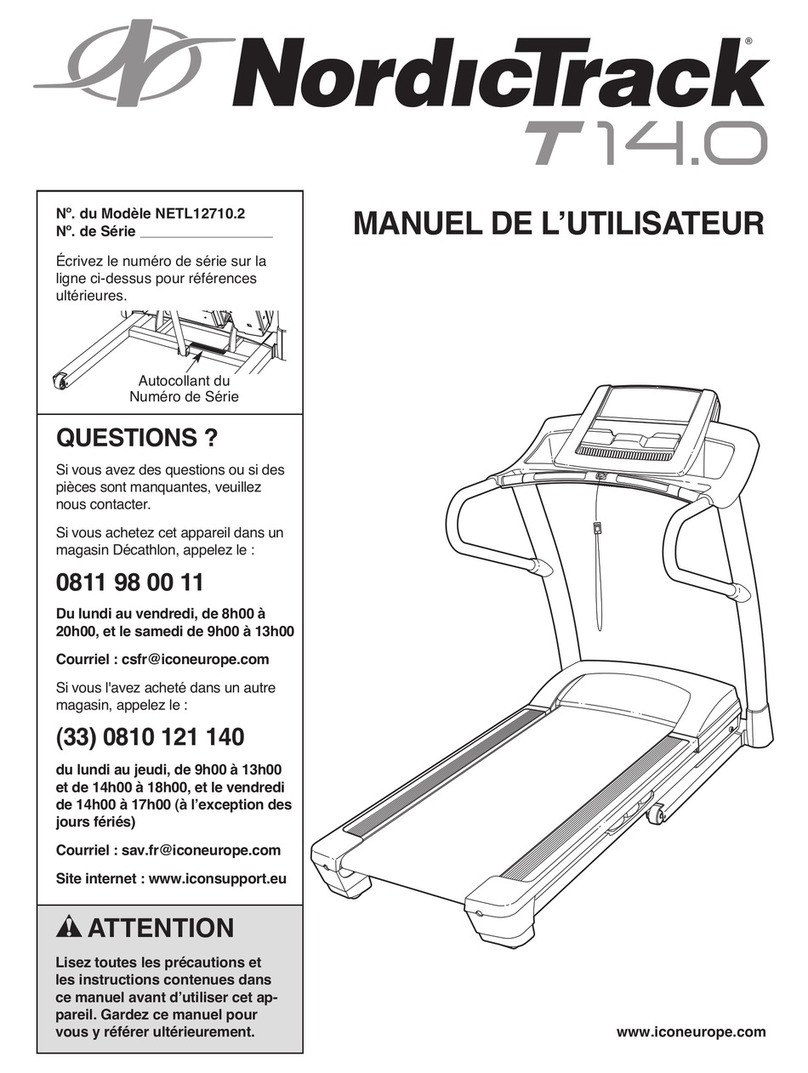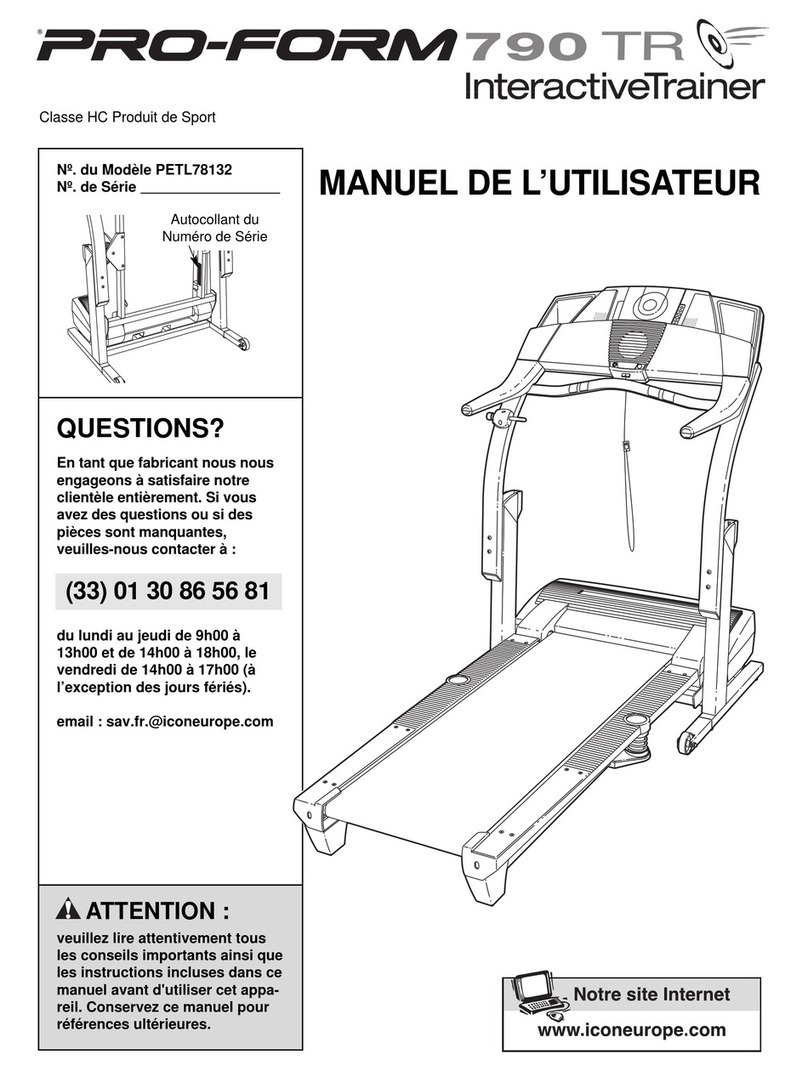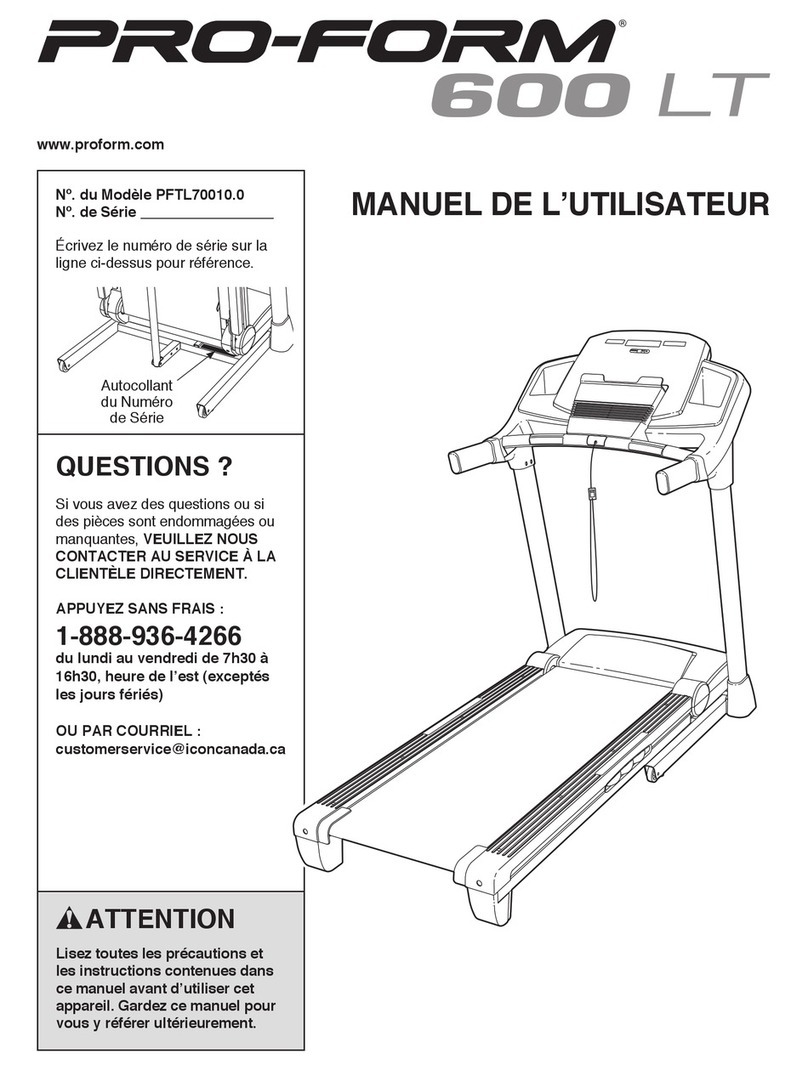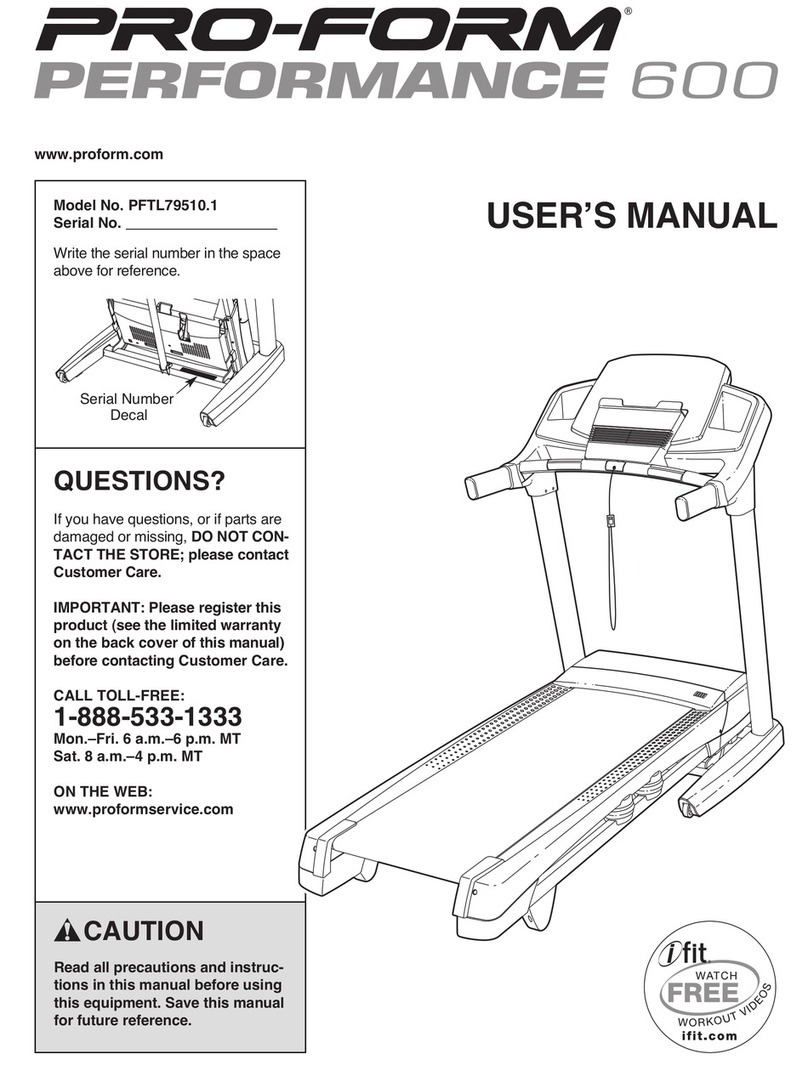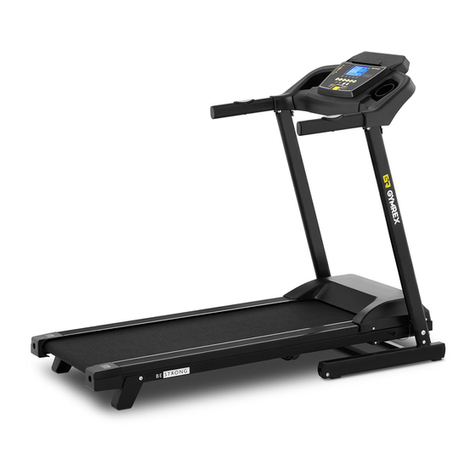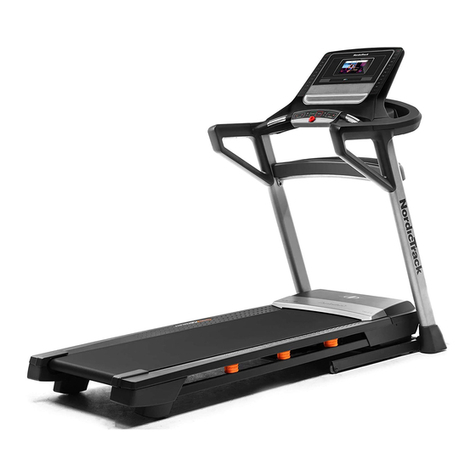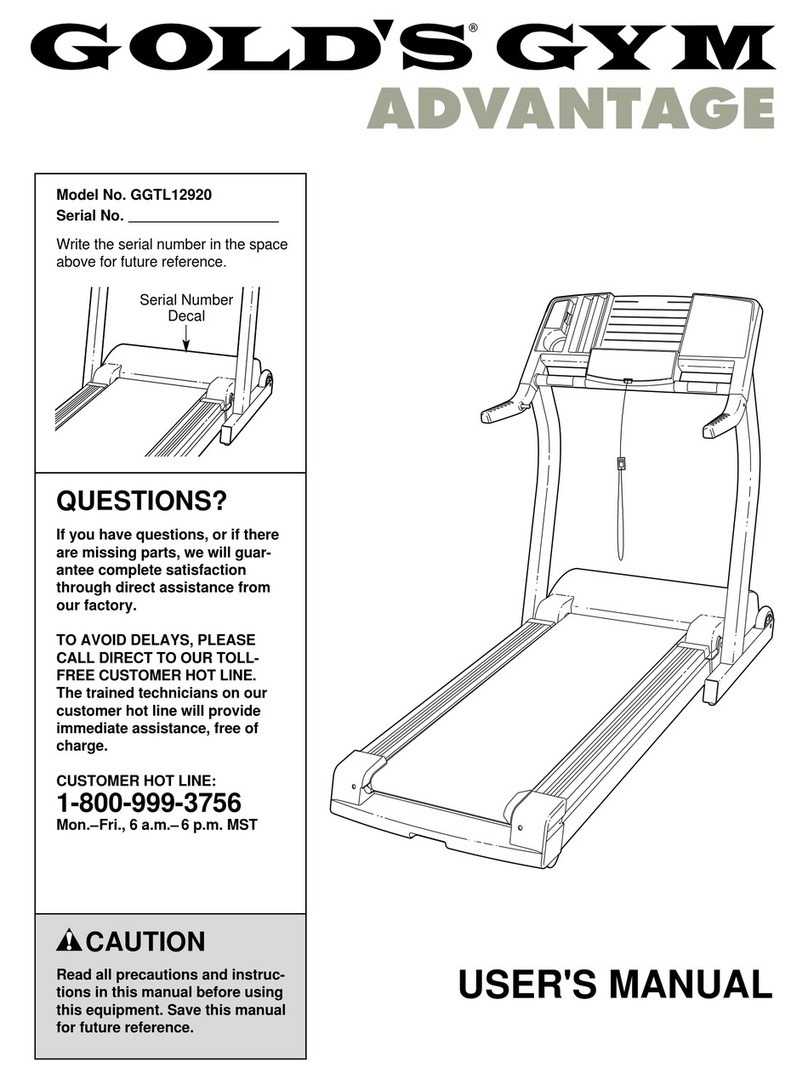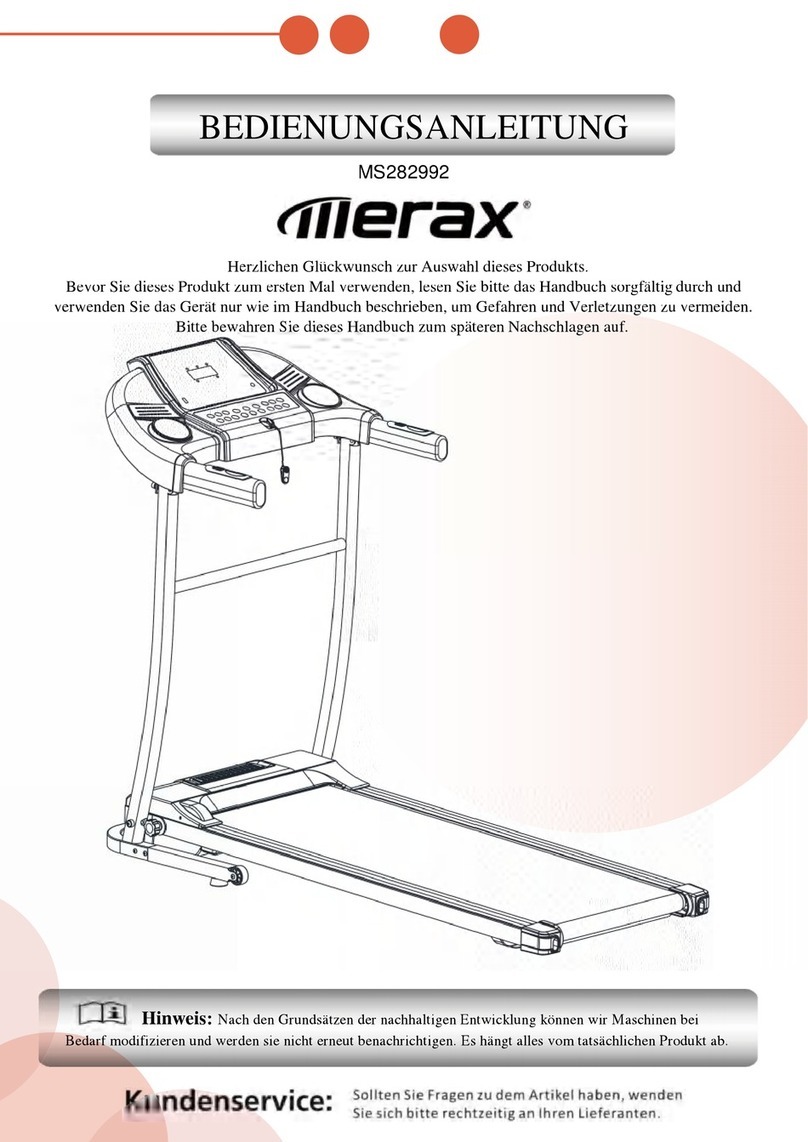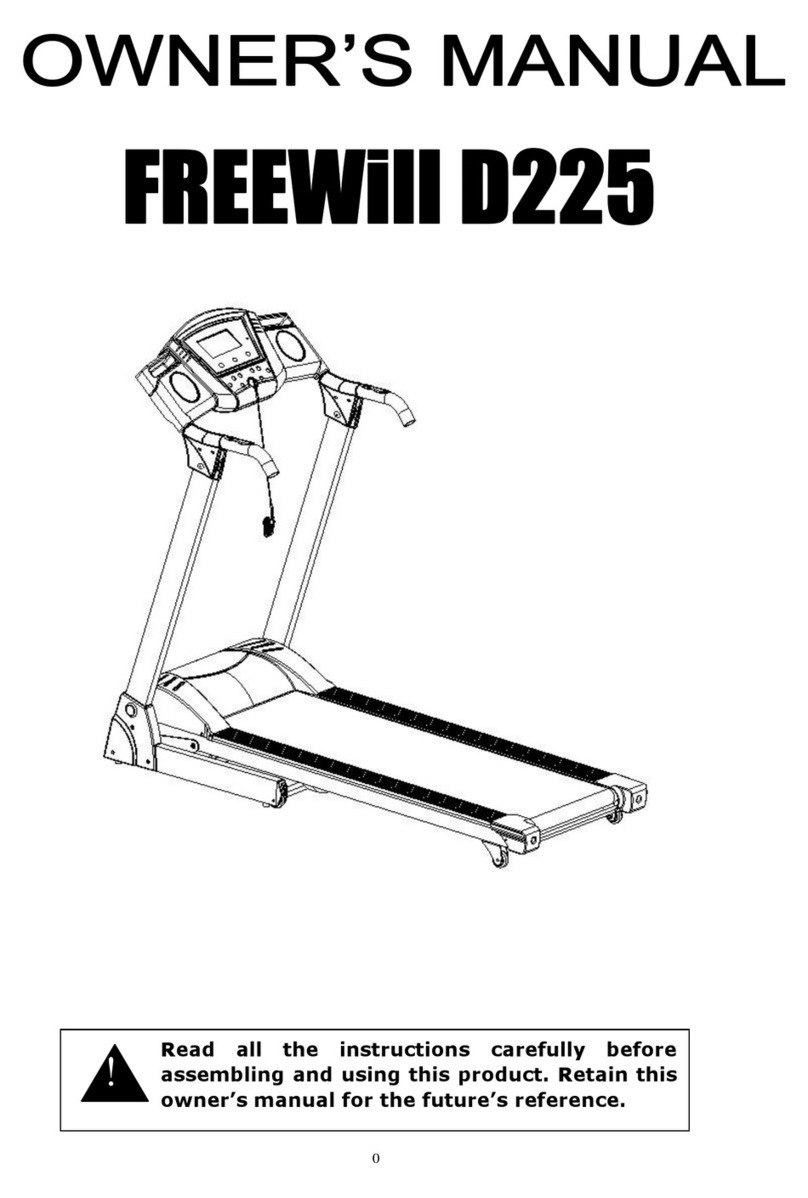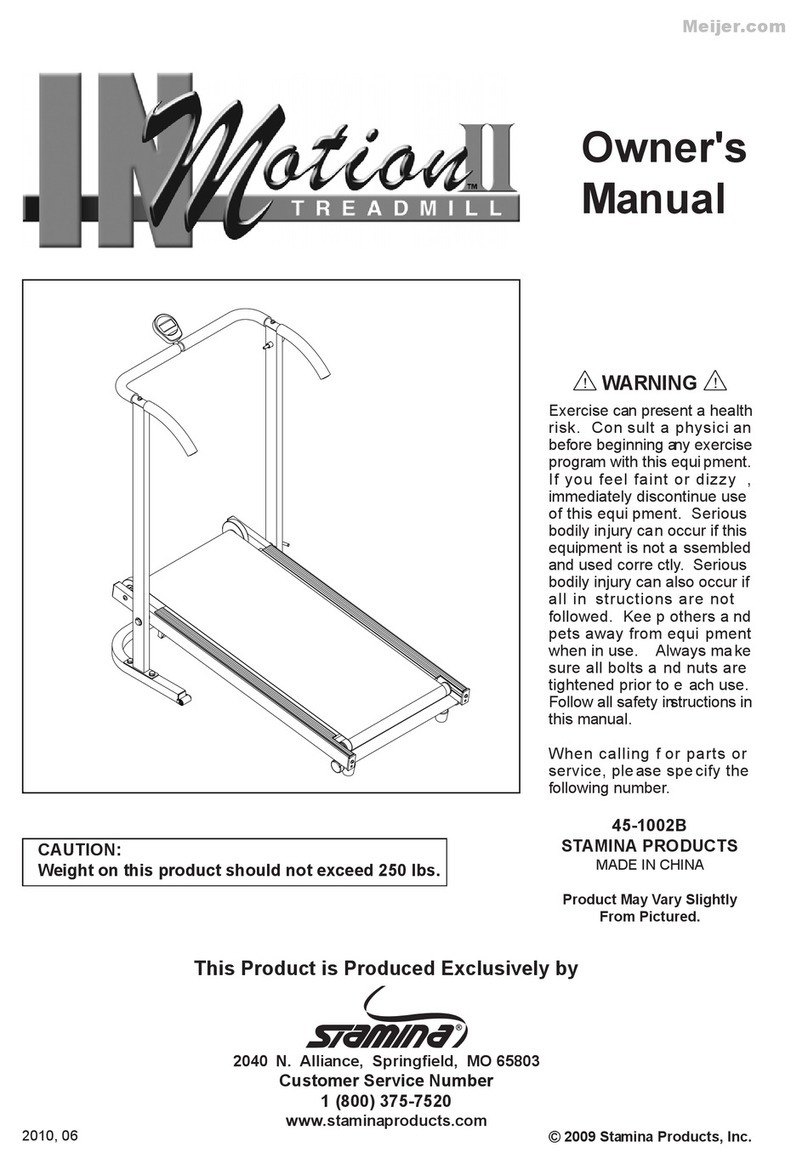18
1. It i the re pon ibility of the owner to en ure
that all u er of thi treadmill are adequately
informed of all warning and precaution .
2. U e the treadmill only a de cribed in thi
manual.
3. Place the treadmill on a level urface, with at
lea t 2.5 m (8 ft.) of clearance behind it and
0.5 m (2 ft.) on each ide. Do not place the
treadmill on any urface that block air open-
ing . To protect the floor or carpet from dam-
age, place a mat under the treadmill.
4. Keep the treadmill indoor , away from moi -
ture and du t. Do not put the treadmill in a
garage or covered patio, or near water.
5. Do not operate the treadmill where aero ol
product are u ed or where oxygen i being
admini tered.
6. Keep children under the age of 12 and pet
away from the treadmill at all time .
7. The treadmill hould not be u ed by per on
weighing more than 115 kg (250 lb .).
8. Never allow more than one per on on the
treadmill at a time.
9. Wear appropriate exerci e clothe when
u ing the treadmill. Do not wear loo e clothe
that could become caught in the treadmill.
Athletic upport clothe are recommended for
both men and women. Always wear athletic
shoes. Never use the treadmill with bare feet,
wearing only stockings, or in sandals.
10. To connect the power cord ( ee page 10), plug
the power cord into an earthed circuit. No
other appliance hould be on the ame circuit.
When replacing the fu e, an ASTA approved
BS1362 type hould be fitted to the fu e car-
rier. A 13 amp fu e hould be u ed.
11. If an exten ion cord i needed, u e only a 3-
conductor, 1mm2(14-gauge) cord that i no
longer than 1.5 m (5 ft.).
12. Keep the power cord away from heated ur-
face .
13. Never move the walking belt whil t the power
i turned off. Do not operate the treadmill if
the power cord or plug i damaged, or if the
treadmill i not working properly. (See
BEFORE YOU BEGIN on page 5 if the tread-
mill i not working properly.)
14. Never tart the treadmill whil t you are tand-
ing on the walking belt. Alway hold the
handrail whil t u ing the treadmill.
15. The treadmill i capable of high peed .
Adju t the peed in mall increment to avoid
udden jump in peed.
16. Never leave the treadmill unattended whil t it
i running. Alway remove the key and unplug
the power cord when the treadmill i not in
u e.
17. The pul e en or i not a medical device.
Variou factor , including the u er' move-
ment, may affect the accuracy of heart rate
reading . The pul e en or i intended only
a an exerci e aid in determining heart rate
trend in general.
18. Do not attempt to rai e, lower, or move the
treadmill until it i properly a embled. (See
ASSEMBLY on page 6 and HOW TO FOLD
AND MOVE THE TREADMILL on page 14.)
You mu t be able to afely lift 20 kg (45 lb .)
to rai e, lower, or move the treadmill.
19. When folding or moving the treadmill, make
ure that the torage latch i fully clo ed.
20. Do not change the incline of the treadmill by
placing object under the treadmill.
21. In pect and properly tighten all part of the
treadmill regularly.
22. Never drop or in ert any object into any
opening.
WARNING:To reduce the ri k of burn , fire, electric hock, or injury to per on , read the
following important precaution and information before operating the treadmill.
IMPORTANT PRECAUTIONS
CONDITIONING GUIDELINES
The following guidelines will help you to plan your ex-
ercise program. For more detailed exercise informa-
tion obtain a reputable book or consult your physician.
EXERCISE INTENSITY
Whether your goal is to burn fat or to strengthen your
cardiovascular system the key to achieving the
desired results is to exercise with the proper intensity.
The proper intensity level can be found by using your
heart rate as a guide. The chart below shows recom-
mended heart rates for fat burning and aerobic exercise.
To find the proper heart rate for you first find your age
near the bottom of the chart (ages are rounded off to
the nearest ten years). Next find the three numbers
above your age. The three numbers define your “train-
ing zone.” The lower two numbers are recommended
heart rates for fat burning; the higher number is the
recommended heart rate for aerobic exercise.
To measure your heart rate during exercise use the
pulse sensor. If your heart rate is too high or too low
adjust the speed and incline of the treadmill.
Fat Burning
To burn fat effectively you must exercise at a relatively
low intensity level for a sustained period of time.
During the first few minutes of exercise your body
uses easily accessible carbohydrate calories for en-
ergy. Only after the first few minutes does your body
begin to use stored fat calories for energy. If your goal
is to burn fat adjust the speed and incline of the tread-
mill until your heart rate is near the lowest number in
your training zone.
For maximum fat burning adjust the speed and incline
of the treadmill until your heart rate is near the middle
number in your training zone.
Aerobic Exerci e
If your goal is to strengthen your cardiovascular sys-
tem your exercise must be “aerobic.” Aerobic exercise
is activity that requires large amounts of oxygen for
prolonged periods of time. This increases the demand
on the heart to pump blood to the muscles and on the
lungs to oxygenate the blood. For aerobic exercise
adjust the speed and incline of the treadmill until your
heart rate is near the highest number in your training
zone.
WORKOUT GUIDELINES
Each workout should include the following three parts:
A Warm-up—Start each workout with 5 to 10 minutes
of stretching and light exercise. A proper warm-up in-
creases your body temperature heart rate and circula-
tion in preparation for exercise.
Training Zone Exerci e—After warming up increase
the intensity of your exercise until your pulse is in your
training zone for 20 to 60 minutes. (During the first few
weeks of your exercise program do not keep your
pulse in your training zone for longer than 20 minutes.)
Breathe regularly and deeply as you exercise—never
hold your breath.
A Cool-down—Finish each workout with 5 to 10 min-
utes of stretching to cool down. This will increase the
flexibility of your muscles and will help prevent post-
exercise problems.
EXERCISE FREQUENCY
To maintain or improve your condition complete three
workouts each week with at least one day of rest be-
tween workouts. After a few months you may com-
plete up to five workouts each week if desired. The key
to success is to make exercise a regular and enjoyable
part of your everyday life.
WARNING:Before beginning thi
or any exerci e program, con ult your phy i-
cian. Thi i e pecially important for individu-
al over the age of 35 or individual with pre-
exi ting health problem .
The pul e en or i not a medical device.
Variou factor , including your movement,
may affect the accuracy of heart rate reading .
The en or i intended only a an exerci e aid
in determining heart rate trend in general.
3
